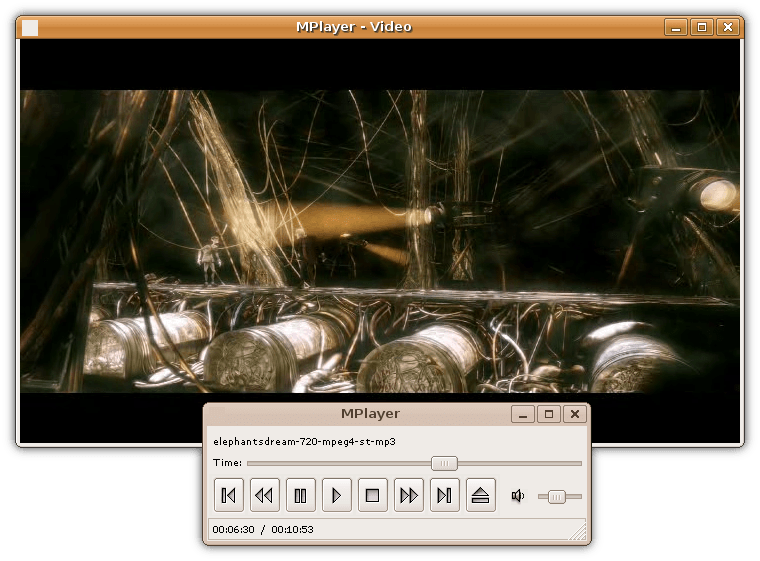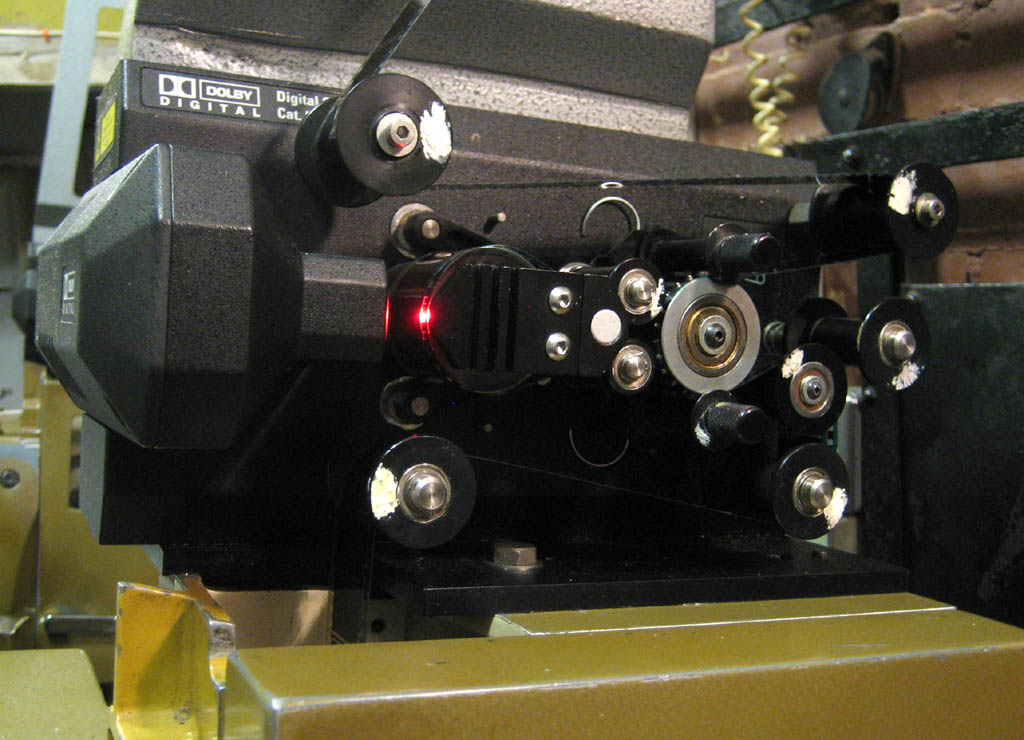|
PowerDVD
PowerDVD is a media player software for Microsoft Windows created by CyberLink, for DVD movie discs, Blu-ray movie discs, and digital video files, photos and music. PowerDVD is offered in various versions, which vary greatly in terms of functionality, and can be expanded to include additional functions such as playback of licensed audio formats or power-saving functions for use on notebooks using plug-ins and so-called “enhancement packs”. During 2016, PowerDVD achieved certification from the Blu-ray Disc Association (BDA) for the playback of Ultra HD Blu-ray Discs, and became the world's first software player to pass the BD-ROM 4.0 PC Application Software License process. Playback of UHD Blu-ray discs requires an SGX-capable Intel CPU; with SGX support removed in newer generations of Intel CPUs, playback of UHD Blu-rays is no longer possible on newer PCs. Features * 8K video playback: added in PowerDVD 19 * Ultra HD Blu-ray disc playback: PowerDVD 17 is the first s ... [...More Info...] [...Related Items...] OR: [Wikipedia] [Google] [Baidu] |
CyberLink
CyberLink Corp. () is a Taiwanese multimedia software company headquartered in New Taipei City, Taiwan. Its products include PC and mobile applications for playback of movies and media, editing of videos and photos, and disc burning and backup solutions. The company has regional offices in the United States, the Netherlands, and Japan. History Founded in 1996, CyberLink Corp. creates multimedia software and AI facial recognition technology. The company developed and owns over 200 patented technologies. CyberLink's headquarters and research facilities are located in Taipei, Taiwan. Regional offices cover operations in North America, Japan, Europe, and Asia-Pacific. Products Media creation * PowerDirector – Video editing software, was first released in 2001 * PhotoDirector – Photo editing software * AudioDirector – Audio editing software, audio restoration and repair * ColorDirector – Color grading software * Director Suite – CyberLink first released its Director ... [...More Info...] [...Related Items...] OR: [Wikipedia] [Google] [Baidu] |
DVD-Video
DVD-Video is a consumer video format used to store digital video on DVDs. DVD-Video was the dominant consumer home video format in most of the world in the 2000s. As of 2024, it competes with the high-definition Blu-ray Disc, while both receive competition as delivery methods by streaming services such as Netflix and Disney+. Discs using the DVD-Video specification require a DVD drive and an MPEG-2 decoder (e.g., a DVD player, or a computer DVD drive with a software DVD player). Commercial DVD movies are encoded using a combination of MPEG-2 compressed video and audio of varying formats (often multi-channel formats as described below). Typically, the data rate for DVD movies ranges from 3 to 9.5 Mbit/s, and the bit rate is usually adaptive. DVD-Video was first available in Japan on October 19, 1996 (with major releases beginning December 20, 1996), followed by a release on March 24, 1997, in the United States. The DVD-Video specification was created by the DVD Forum a ... [...More Info...] [...Related Items...] OR: [Wikipedia] [Google] [Baidu] |
Ultra HD Blu-ray
Ultra HD Blu-ray (4K Ultra HD, UHD-BD, or 4K Blu-ray) is a digital optical disc data storage format that is an enhanced variant of Blu-ray. Ultra HD Blu-ray supports 4K UHD (3840 × 2160 pixel resolution) video at frame rates up to 60 progressive frames per second, encoded using High-Efficiency Video Coding. These discs are incompatible with existing standard Blu-ray players. The first Ultra HD Blu-ray Discs were officially released in the United States on February 14, 2016. To differentiate retail Ultra HD Blu-ray releases, the format usually uses a black opaque or largely transparent keep case packaging format (as opposed to blue), but with the same case size as standard Blu-ray. The format is supported on Microsoft's Xbox One X, One S, Series X, and Sony's PlayStation 5. Software made for the PlayStation 5 can use 100 GB UHD Blu-ray discs. History On May 12, 2015, the Blu-ray Disc Association (BDA) revealed completed specifications and the official Ultra HD Blu-ray ... [...More Info...] [...Related Items...] OR: [Wikipedia] [Google] [Baidu] |
Blu-ray Disc
Blu-ray (Blu-ray Disc or BD) is a Digital media, digital optical disc data storage format designed to supersede the DVD format. It was invented and developed in 2005 and released worldwide on June 20, 2006, capable of storing several hours of high-definition video (HDTV 720p and 1080p). The main application of Blu-ray is as a medium for video material such as feature films and for the physical distribution of video games for the PlayStation 3, PlayStation 4, PlayStation 5, Xbox One, and Xbox Series X and Series S, Xbox Series X. The name refers to the blue laser used to read the disc, which allows information to be stored at a greater density than is possible with the longer-wavelength red laser used for DVDs, resulting in an increased capacity. The polycarbonate disc is in diameter and thick, the same size as DVDs and Compact disc, CDs. Conventional (or "pre-BDXL") Blu-ray discs contain 25gigabyte, GB per layer, with dual-layer discs (50GB) being the industry standard for fe ... [...More Info...] [...Related Items...] OR: [Wikipedia] [Google] [Baidu] |
Software Guard Extensions
Intel Software Guard Extensions (SGX) is a set of instruction codes implementing trusted execution environment that are built into some Intel central processing units (CPUs). They allow user-level and operating system code to define protected private regions of memory, called ''enclaves''. SGX is designed to be useful for implementing secure remote computation, secure web browsing, and digital rights management (DRM). Other applications include concealment of proprietary algorithms and of encryption keys. SGX involves encryption by the CPU of a portion of memory (the ''enclave''). Data and code originating in the enclave are decrypted on the fly ''within'' the CPU, protecting them from being examined or read by other code, including code running at higher privilege levels such as the operating system and any underlying hypervisors. While this can mitigate many kinds of attacks, it does not protect against side-channel attacks. A pivot by Intel in 2021 resulted in the deprecati ... [...More Info...] [...Related Items...] OR: [Wikipedia] [Google] [Baidu] |
Media Player (application Software)
Media player software is a type of application software for playing multimedia computer files like audio and video files. Media players commonly display standard media control icons known from physical devices such as tape recorders and CD players, such as play ( ), pause ( ), fastforward (⏩️), rewind (⏪), and stop ( ) buttons. In addition, they generally have progress bars (or "playback bars"), which are sliders to locate the current position in the duration of the media file. Mainstream operating systems have at least one default media player. For example, Windows comes with Windows Media Player, Microsoft Movies & TV and Groove Music, while macOS comes with QuickTime Player and Music. Linux distributions come with different media players, such as SMPlayer, Amarok, Audacious, Banshee, MPlayer, mpv, Rhythmbox, Totem, VLC media player, and xine. Android comes with YouTube Music for audio and Google Photos for video, a ... [...More Info...] [...Related Items...] OR: [Wikipedia] [Google] [Baidu] |
DivX
DIVX (Digital Video Express) is a discontinued digital video format. Created in part by Circuit City, it was an unsuccessful attempt to create an alternative to video rental in the United States. The format's poor reception from consumers resulted in major financial losses for Circuit City and is credited with being part of the company's downfall. Format DIVX was a rental format variation on the DVD player in which a customer would buy a DIVX disc (similar to a DVD) for approximately US$4.50, which was watchable for up to 48 hours from its initial viewing. After this period, the disc could be viewed by paying a continuation fee to play it for two more days. Viewers who wanted to watch a disc an unlimited number of times could convert the disc to a "DIVX silver" disc for an additional fee. "DIVX gold" discs that could be played an unlimited number of times on any DIVX player were announced at the time of DIVX's introduction, but no DIVX gold titles were ever released. Eac ... [...More Info...] [...Related Items...] OR: [Wikipedia] [Google] [Baidu] |
Dolby Digital
Dolby Digital, originally synonymous with Dolby AC-3 (see below), is the name for a family of audio compression technologies developed by Dolby Laboratories. Called Dolby Stereo Digital until 1995, it is lossy compression (except for Dolby TrueHD). The first use of Dolby Digital was to provide digital sound in cinemas from 35 mm film prints. It has since also been used for TV broadcast, radio broadcast via satellite, digital video streaming, DVDs, Blu-ray discs and game consoles. Dolby AC-3 was the original version of the Dolby Digital codec. The basis of the Dolby AC-3 multi-channel audio coding standard is the modified discrete cosine transform (MDCT), a lossy audio compression algorithm. It is a modification of the discrete cosine transform (DCT) algorithm, which was proposed by Nasir Ahmed in 1972 for image compression. The DCT was adapted into the MDCT by J.P. Princen, A.W. Johnson and Alan B. Bradley at the University of Surrey in 1987. Dolby Laboratories adap ... [...More Info...] [...Related Items...] OR: [Wikipedia] [Google] [Baidu] |
Dolby Digital EX
Dolby Digital, originally synonymous with Dolby AC-3 (see below), is the name for a family of audio compression technologies developed by Dolby Laboratories. Called Dolby Stereo Digital until 1995, it is lossy compression (except for Dolby TrueHD). The first use of Dolby Digital was to provide digital sound in cinemas from 35 mm film prints. It has since also been used for TV broadcast, radio broadcast via satellite, digital video streaming, DVDs, Blu-ray discs and game consoles. Dolby AC-3 was the original version of the Dolby Digital codec. The basis of the Dolby AC-3 multi-channel audio coding standard is the modified discrete cosine transform (MDCT), a lossy audio compression algorithm. It is a modification of the discrete cosine transform (DCT) algorithm, which was proposed by Nasir Ahmed in 1972 for image compression. The DCT was adapted into the MDCT by J.P. Princen, A.W. Johnson and Alan B. Bradley at the University of Surrey in 1987. Dolby Laboratories adapted t ... [...More Info...] [...Related Items...] OR: [Wikipedia] [Google] [Baidu] |
Dolby Digital Plus
Dolby Digital Plus, also known as Enhanced AC-3 (and commonly abbreviated as DDP, DD+, E-AC-3 or EC-3), is a digital audio compression scheme developed by Dolby Labs for the transport and storage of multi-channel digital audio. It is a successor to Dolby Digital (AC-3), and has a number of improvements over that codec, including support for a wider range of data rates (32 kbit/s to 6144 kbit/s), an increased channel count, and multi-program support (via substreams), as well as additional tools (algorithms) for representing compressed data and counteracting artifacts. Whereas Dolby Digital (AC-3) supports up to five full-bandwidth audio channels at a maximum bitrate of 640 kbit/s, E-AC-3 supports up to 15 full-bandwidth audio channels at a maximum bitrate of 6.144 Mbit/s. The full set of technical specifications for E-AC-3 (and AC-3) are standardized and published in Annex E of ATSC A/52:2012, as well as Annex E of ETSI TS 102 366. Technical details Specif ... [...More Info...] [...Related Items...] OR: [Wikipedia] [Google] [Baidu] |
Dolby TrueHD
Dolby TrueHD is a lossless, multi-channel audio codec developed by Dolby Laboratories for home video, used principally in Blu-ray Disc and compatible hardware. Dolby TrueHD, along with Dolby Digital Plus (E-AC-3) and Dolby AC-4, is one of the intended successors to the Dolby Digital (AC-3) lossy surround format. Dolby TrueHD competes with DTS's DTS-HD Master Audio (DTS-HD MA), another lossless surround sound codec. The Dolby TrueHD specification provides for up to 16 discrete audio channels, each with a sampling rate of up to 192 kHz and sample depth of up to 24 bits. Dolby's compression mechanism for TrueHD is Meridian Lossless Packing (MLP); prior to Dolby TrueHD, MLP was used for the DVD-Audio format, although the two formats' respective implementations of MLP are not mutually compatible. A Dolby TrueHD audio stream varies in bitrate, as does any other losslessly compressed audio format. Like its predecessor, Dolby TrueHD's bitstream carries program metadata, or n ... [...More Info...] [...Related Items...] OR: [Wikipedia] [Google] [Baidu] |




